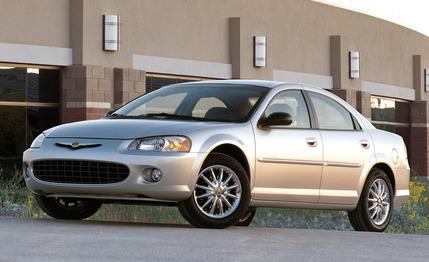
 Road Test
Road Test
Since we test-drive more than 200 cars a year, you'd think we could approach any car blindfolded, drive it, and tell you what marque it is. For the most part, we can, and every manufacturer would like its cars to have a unique image and feel that's instantly recognizable to consumers.
BMW, for one, does an excellent job of giving its range of cars a particular feel that test drivers are quick to recognize. After stepping out of the new Sebring sedan, we're realizing that Chrysler is on its way to achieving the same feat because the Sebring feels very much like a scaled-down version of its 300M.
This is good news for mid-size-sedan buyers, as that bigger 300M is a fine car. In 1999 and 2000, we voted the 300M onto our 10Best list and awarded it a second-place finish in a nine-car comparison test last February. The 300M costs about $30,000, and the Sebring LXi pictured here starts at a more user-friendly $21,405.
The new-for-2001 Sebring four-door replaces the Chrysler Cirrus and is a twin of the Dodge Stratus four-door. So what's the difference between the two models? DaimlerChrysler says the Stratus is tuned for sporty driving and the Sebring for comfort. Nonetheless, we quite liked the way our Sebring went down the road.
The front suspension still employs sophisticated unequal-length control arms -- a rare arrangement in a mid-size-sedan class that favors less expensive front strut suspensions. The arms do a better job of keeping the tires square to the road during cornering. Despite the good suspenders, ultimate grip in the Sebring is low. We recorded only 0.75 g on the skidpad but found we could effortlessly corner the Sebring at the edge of sliding.
Like every other sedan on the market today, the Sebring safely slides its front wheels when the driver overcooks a corner. We liked how well the sliding front end tucked in with a lift of the throttle, but the Sebring is still a tad soft for our hard-driving tastes.
The upside to the Sebring's low grip is a cushy ride that softens harsh roads. The ride is supple but not spongy. For 2001, Chrysler says it stiffened the body structure by 13 percent in torsion and 33 percent in bending. It also filled the cavities at the base of the B-pillar and in the lower sills with foam to further dampen road noise. The Cirrus was on the raucous side of the hugely competitive mid-size-sedan class, and the improvements have now brought the renamed Sebring in line with the most refined.
Some of the credit for the new refinement should go to the 2.7-liter aluminum V-6 engine. It replaces a 2.5-liter Mitsubishi-built unit and is shared with the full-size Dodge Intrepid and Chrysler Concorde sedans. In the Sebring, the engine is mounted transversely, and its 200 horsepower is 32 more horsepower than the old unit made.
The engine revs with a subdued and smart snarl, but it's saddled with too much weight -- 3340 pounds. Among the eight mid-size sedans we compared in September 1999, the new Sebring would have been the most powerful -- and the porkiest. Because of its weight, acceleration times are only a hair better than that test's average: 60-mph sprints take 9.1 seconds, and the quarter-mile distance breezes by in 16.9 seconds at 84 mph. The Oldsmobile Alero, the quickest car in that comparo, could hit 60 mph in 8.1 seconds and turn the quarter in 16.3 seconds at 85 mph. (The 3186-pound Stratus we tested back then ran 9.4 to 60 mph.)
New, bigger brakes shaved only two feet off our lighter Stratus's best stop, taking 199 feet to bring the Sebring to a standstill from 70 mph -- that's 10 more feet than the average braking performance in that aforementioned comparo.
Our test car came with the $1295 luxury-group option that includes chromed aluminum wheels, a theft-deterrent system, and the AutoStick manumatic transmission. If you want at least a semblance of the act of shifting gears manually, the AutoStick is the only way to go, as there is no manual transmission in Sebring four-doors, although there is one in the two-door Sebring. The AutoStick responds promptly when asked to downshift, but if the engine gets close to the 6500-rpm redline, it upshifts automatically. Left in drive mode, the tranny takes longer than we like to downshift. And when you floor the throttle, there's a short pause -- as though the engine is inhaling -- before the gear kicks down. Other cars, such as the Oldsmobile Alero, do the job with less fuss.